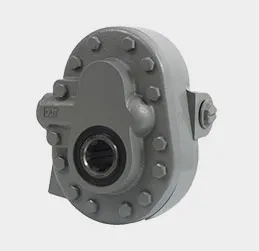Precision Sand Casting Techniques for Enhanced Metal Component Production and Quality
Precision Sand Casting A Game Changer in Manufacturing
Precision sand casting is a versatile and efficient manufacturing process that has been pivotal for various industries such as automotive, aerospace, and industrial machinery. While traditional sand casting uses a looser method, precision sand casting has refined this technique to produce intricate components with high accuracy and superior surface finishes.
Understanding the Process
At its core, precision sand casting involves the creation of a mold from a mixture of sand and a binding agent, usually resin. This mixture, known as a sand mix, is tightly packed around a pattern that represents the final product. This method ensures minimal gaps which can cause imperfections in the component. The pattern is generally made from metal or a durable polymer, allowing for detailed designs and tight tolerances.
Once the mold is prepared, molten metal is poured into it. The metal fills the intricate cavities, taking on the shape of the pattern. After the metal has cooled and solidified, the mold is broken away to reveal the casting. The result is a component that often requires little post-processing due to its quality finish and precise dimensions.
Benefits of Precision Sand Casting
1. High Precision and Accuracy One of the standout features of precision sand casting is its ability to produce complex shapes and designs with a high degree of accuracy. This capability makes it suitable for industries where precision is critical, such as aerospace components that demand strict tolerances.
2. Cost-Effectiveness Although initial setup costs for molds may be higher, precision sand casting can lead to cost savings in the long run. This method allows for the production of large quantities without a significant increase in production costs. Furthermore, the reduced need for secondary machining lowers overall manufacturing expenses.
precision sand casting

3. Material Variety Precision sand casting is compatible with a wide range of materials, including various alloys of aluminum, bronze, and iron. This flexibility enables manufacturers to select materials that best suit the specific application, improving performance characteristics such as strength and thermal stability.
4. Minimal Waste The process is designed to maximize material usage, minimizing waste. This is particularly beneficial in today’s environmentally conscious manufacturing climate, as it aligns with sustainability goals and reduces raw material costs.
5. Flexibility in Design The technique allows for alterations to be made to designs without significant retooling costs, giving manufacturers the flexibility to adapt to changing requirements or innovations in design.
Applications of Precision Sand Casting
Precision sand casting finds applications in various sectors. In the automotive industry, it is often used to create engine components, transmission casings, and structural parts that require high strength and lightweight. In the aerospace sector, components like turbine blades and landing gear are manufactured through this method, ensuring they meet the stringent regulations and performance criteria.
Moreover, precision sand casting is utilized in creating valves, pumps, and other components in the industrial machinery sector. The ability to produce parts that not only function effectively but also are highly durable under challenging operational conditions makes this method a preferred choice for many manufacturers.
Conclusion
In conclusion, precision sand casting represents an innovative approach to traditional manufacturing processes. Its ability to produce highly detailed and accurate components with minimal waste offers significant advantages to manufacturers across various industries. As technology continues to evolve, we can expect further advancements in precision sand casting techniques, propelling its importance and applications in the manufacturing landscape. The fusion of quality, efficiency, and adaptability positions precision sand casting as a cornerstone of modern manufacturing, making it a game changer that is here to stay.
-
Aluminium Pressure Die Casting High-Precision & Durable Solutions for Complex PartsNewsJul.08,2025
-
Top Aluminum Sand Castings Manufacturer – Precision Green Sand Castings for Industrial NeedsNewsJul.08,2025
-
Precision Lost Wax Casting Quotes – High Accuracy Custom Parts Lost Wax Precision Casting ServicesNewsJul.07,2025
-
High-Quality Sand Used for Casting - Superior Sand for Sand Casting ProcessesNewsJul.07,2025
-
China Supply High End Metal Stamping Parts Sino - Precision Manufacturing FactoryNewsJul.06,2025
-
High-Quality Automotive Investment Casting Services Precision & Sand Casting SolutionsNewsJul.06,2025















